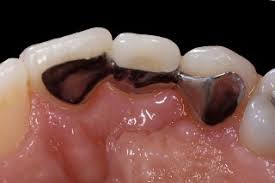What Is A Maryland Bridge? Fixed Solution

A Maryland bridge, also known as a resin-bonded bridge or Maryland bonded bridge, is a type of dental bridge that is used to replace a missing tooth. This type of bridge is unique in that it is attached to the adjacent teeth using metal wings or clips, which are bonded to the back of the teeth using a special adhesive. The Maryland bridge is a popular choice for replacing missing teeth, particularly in the front of the mouth, due to its aesthetic appeal and conservative approach.
How Does a Maryland Bridge Work?
A Maryland bridge consists of three main components: the pontic (the artificial tooth), the metal wings or clips, and the adhesive. The metal wings or clips are attached to the back of the adjacent teeth, and the pontic is attached to these wings or clips. The adhesive used to bond the metal wings to the teeth is a type of resin that is cured with a special light to create a strong and durable bond.
Advantages of a Maryland Bridge
There are several advantages to choosing a Maryland bridge as a fixed solution for missing teeth. Some of the benefits include:
- Conservative approach: The Maryland bridge is a conservative approach to replacing missing teeth, as it does not require the removal of significant amounts of tooth structure from the adjacent teeth.
- Aesthetic appeal: The Maryland bridge is a popular choice for replacing missing teeth in the front of the mouth, as it can be designed to match the surrounding teeth and create a natural-looking smile.
- Cost-effective: The Maryland bridge is often less expensive than other types of dental bridges, making it a more affordable option for patients.
- Quick and easy placement: The Maryland bridge can be placed in a single visit to the dentist, making it a quick and convenient solution for missing teeth.
Disadvantages of a Maryland Bridge
While the Maryland bridge is a popular choice for replacing missing teeth, there are some disadvantages to consider. Some of the drawbacks include:
- Limited strength: The Maryland bridge is not as strong as other types of dental bridges, and may not be suitable for patients who grind or clench their teeth.
- Sensitive to decay: The Maryland bridge can be sensitive to decay, particularly at the junction between the metal wing and the tooth.
- Not suitable for all patients: The Maryland bridge is not suitable for all patients, particularly those with significant tooth decay or gum disease.
Alternatives to a Maryland Bridge
There are several alternatives to a Maryland bridge, including:
- Traditional dental bridge: A traditional dental bridge is a type of bridge that is attached to the adjacent teeth using crowns.
- Implant-supported bridge: An implant-supported bridge is a type of bridge that is attached to dental implants, which are surgically placed in the jawbone.
- Removable partial denture: A removable partial denture is a type of denture that is designed to replace multiple missing teeth.
Step-by-Step Process for Getting a Maryland Bridge
The process for getting a Maryland bridge typically involves the following steps:
- Initial consultation: The patient schedules an initial consultation with a dentist to discuss their options for replacing missing teeth.
- Impressions and models: The dentist takes impressions and models of the patient’s teeth to create a custom-made Maryland bridge.
- Preparation of adjacent teeth: The dentist prepares the adjacent teeth by removing a small amount of tooth structure to make room for the metal wings.
- Bonding of metal wings: The metal wings are bonded to the adjacent teeth using a special adhesive.
- Placement of pontic: The pontic is attached to the metal wings and adjusted to fit comfortably in the patient’s mouth.
Pros and Cons of a Maryland Bridge
| Pros | Cons |
|---|---|
| Conservative approach | Limited strength |
| Aesthetic appeal | Sensitive to decay |
| Cost-effective | Not suitable for all patients |

Maintenance and Care of a Maryland Bridge
To ensure the longevity and success of a Maryland bridge, it’s essential to follow a regular maintenance and care routine. This includes:
- Brushing and flossing: Brushing and flossing regularly to remove plaque and bacteria from the bridge and surrounding teeth.
- Regular dental check-ups: Scheduling regular dental check-ups to monitor the bridge and surrounding teeth for any signs of decay or damage.
- Avoiding certain foods: Avoiding certain foods, such as hard or sticky candies, that can damage the bridge or surrounding teeth.
By following these steps and maintaining good oral hygiene, patients can enjoy a healthy and beautiful smile with their Maryland bridge.
What is the average cost of a Maryland bridge?
+The average cost of a Maryland bridge can vary depending on the location, dentist, and materials used. However, on average, the cost of a Maryland bridge can range from 500 to 2,000 per tooth.
How long does a Maryland bridge last?
+A Maryland bridge can last for many years with proper care and maintenance. On average, a Maryland bridge can last for 10 to 20 years, depending on the quality of the bridge and the patient’s oral hygiene habits.
Is a Maryland bridge suitable for all patients?
+No, a Maryland bridge is not suitable for all patients. Patients with significant tooth decay or gum disease may not be good candidates for a Maryland bridge. Additionally, patients who grind or clench their teeth may not be suitable for a Maryland bridge, as it can put excessive stress on the bridge and surrounding teeth.
